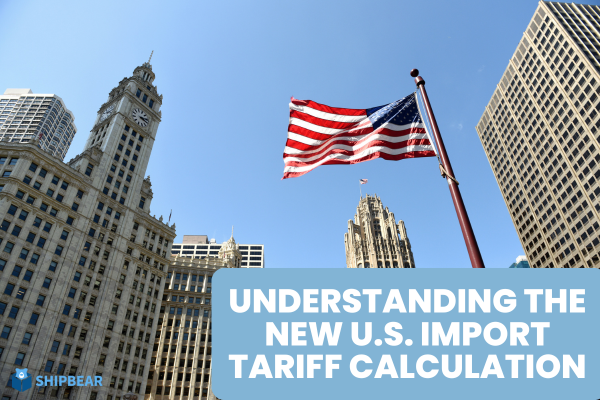Introduction
In recent developments, the U.S. government has implemented new tariff policies affecting imports from China and Hong Kong. The previous exemption for goods valued under $800, known as the T86 policy, has been revoked. Now, a 10% additional tariff applies to all related products. This change necessitates that sellers learn how to accurately calculate U.S. import taxes to ensure compliance and avoid unnecessary costs.
Overview of US Tariff on China
U.S. tariffs are imposed under the Tariff Act, primarily aimed at protecting domestic industries, balancing trade deficits, and generating government revenue. In addition to standard tariff rates, the U.S. may also impose anti-dumping and countervailing duties on specific products. Tariffs are applied to imported goods, with varying rates depending on the product.
Calculating U.S. Import Tariffs
U.S. import tariffs are typically calculated based on the “duty-paid value” of goods, using the formula:
Tariff Amount = Duty-Paid Value x Tariff Rate
Duty-Paid Value
Duty-paid value includes the value of the goods themselves, plus freight, insurance, and other ancillary costs:
Duty-Paid Value = Goods Value + International Freight + International Insurance + Other Costs
Tariff Rate
The tariff rate is determined based on the product’s HS code (Harmonized System code). Each product corresponds to a 10-digit HS code, which is used to calculate the applicable tariff rate.
U.S. Import Tariff Schedule
The U.S. government publishes a Tariff Schedule that outlines the HS codes, product descriptions, and tariff rates for all imported products. You can find the latest version of the Tariff Schedule on the U.S. International Trade Commission’s website.
Overview of New Tariff Policies
1. Revocation of the T86 Exemption
Previously, goods valued under $800 could be imported tax-free using the T86 clearance method. This policy has been terminated, meaning that even products valued below $800 must now go through customs clearance and incur the relevant taxes.
2. New 10% Additional Tariff
In addition to existing tariffs (301, 201, and 232), all products from China (including Hong Kong) will incur an additional 10% import tariff. This significantly impacts the cost structure for sellers.
3. Strengthened Customs Regulations
The U.S. Customs and Border Protection (CBP) has intensified scrutiny of import declarations. Importers must provide detailed information, including HS Codes, product names, purposes, materials, weights, and quantities. Failure to accurately declare this information may result in additional inspections, fines, or even confiscation or return of goods.
Duty-Free Allowances for Items from Hong Kong
According to current U.S. customs regulations, individuals can import items with a total retail value not exceeding $800 each day without incurring tariffs. This total retail value is calculated based on prices in the country of export or shipment, excluding shipping and insurance costs.
Duty-Free Allowances:
- Personal Items: Items brought into the U.S. from Hong Kong can be imported duty-free if their total value does not exceed $800.
- Gifts: Gifts mailed or brought into the U.S. from Hong Kong can be imported duty-free if each gift is valued at no more than $100, with a total value not exceeding $1,000.
Certain products, such as alcohol and cigarettes, have separate duty-free limits.
If the total value exceeds these allowances, customs duties will need to be paid based on the specific items. You can estimate potential duties using tools from the Customs and Border Protection (CBP) website or the Fuuffy import tax calculator. However, the actual duty costs will ultimately depend on the final assessment by customs authorities.
Stay Informed on Policy Changes
Given the rapid changes in international trade regulations, it’s crucial for sellers to remain agile. For instance, the U.S. Postal Service (USPS) initially announced a halt to accepting packages from China and Hong Kong but reversed this decision within 24 hours, highlighting the uncertainty in these policies. The U.S. government may impose further tariffs on Chinese goods or tighten customs regulations at any time.
Therefore, sellers should closely monitor developments and maintain communication with logistics providers and customs brokers to receive the latest information and adjust their business strategies accordingly, ensuring compliance and operational success.
Conclusion
The new tariff policies present challenges but also opportunities for informed sellers. By understanding the calculation of tariffs and staying updated on regulatory changes, businesses can navigate the complexities of importing goods to the U.S. effectively.
If you prefer a hassle-free approach, consider using Shipbear’s all-in-one dropshipping solution. With their services, you can enjoy a simplified process, and the associated fees are structured to minimize duty-related costs. Let Shipbear take care of the logistics while you focus on growing your business!



